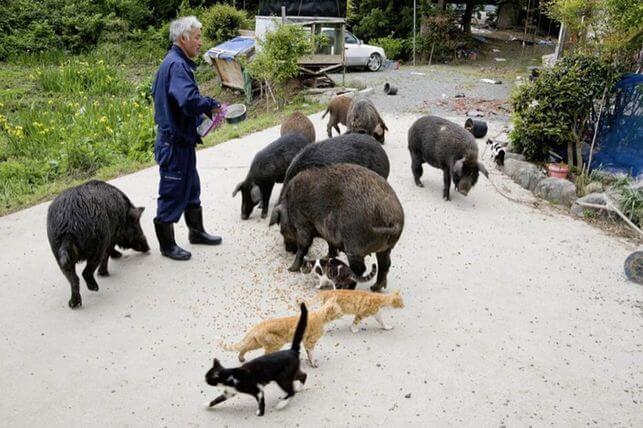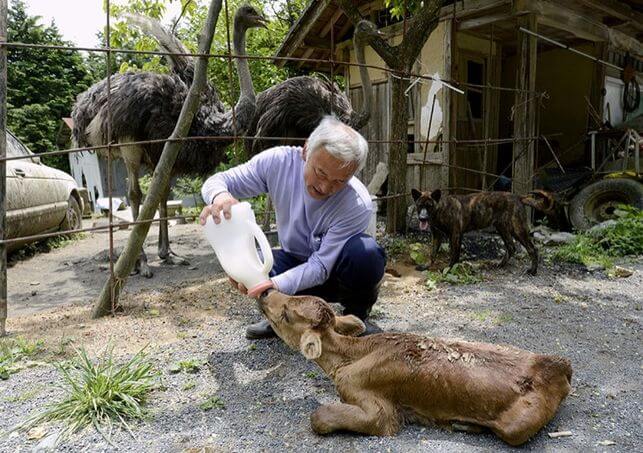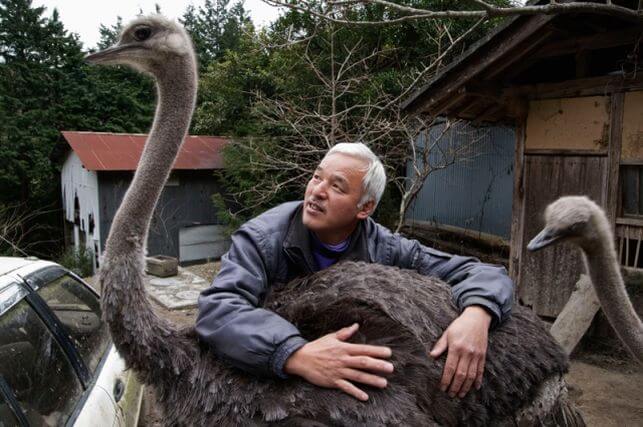Fukushima’s Animal Guardian

Naoto Matsumura, Fukushima’s animal guardian, was one of the people who was forced to leave his home. He had to abandon all of his animals and he loved all of them as an important part of his family.
This is the story about how humans can destroy and rebuild at the same time. Also, this story is about people fighting nuclear energy and protecting their animals.
Naoto Matsumura currently takes care of animals that were left behind after the nuclear disaster. He eagerly does this without losing a minute.
The nuclear disaster

Source: www.eldiario.es
On Friday, March 11, 2011, an earthquake took place off the northeastern coast of Japan. This caused a tsunami that created a huge explosion in the nuclear reactor at Fukushima. At the time of the nuclear disaster, the power station had six reactors. Three of them were functioning and was impossible to cool them because there were failures in the electrical grid.
The risk of radioactive contamination was so great that the government decided that the best thing to do was to evacuate the area. In the city of Tomioka, there were more than 16,000 residents who had evacuated the area. This was an area that was well known for cultural activities and cherry blossoms. This happy city that was full of life became a ghost town.
During these difficult times, Naoto Matsumura fled with his family to Iwaki. They went to stay with family but were rejected because their family was afraid that they were contaminated by the radiation. They had to go to shelters together with the other refugees.
The return of Naoto, Fukushima’s Animal Guardian
Naoto wanted to return to Tomioka. He didn’t want to leave the farm animals that he loved so much by themselves. Naoto was asked if he was afraid at the time and he said he was.
He didn’t know if the radiation would be everywhere if he would get cancer, or develop different kinds of tumors. But, when he saw that the animals were all healthy, he decided to stay with them.
When Naoto started to feed his animals, he soon realized that there were many other abandoned animals. There were dogs and cats locked in their houses, unable to leave. He also saw cows, pigs, ponies, and even an ostrich. When they heard his truck, all of these animals started to bark, meow, or approach him for food.
The road to help for Fukushima’s Animal Guardian
Naoto realized that he needed to take action. He charted a route through the area to distribute food and care for all the abandoned animals. Also, he didn’t have time to take them or negotiate a solution with the government.
The area he was working with was about forty kilometers from the isolated area. There were hundreds of animals that were left behind without any food or water and they were slowly dying.
Matsumura’s resources were very limited and this made it impossible to feed all of these animals. Because the area didn’t have electricity, he used solar energy equipment to connect to the Internet and ask the whole world for help through a Facebook page. And, he got it. Hundreds of people donated food and resources for Naoto’s mission.
From time to time, helicopters delivered supplies in certain areas, which made it possible for him to survive. The formerly doomed cows that were enclosed in farms are free now.
Naoto’s trials as Fukushima’s Animal Guardian

Picture source: www.eldiario.es
Naoto’s contamination tests ending up being positive. He’s contaminated, but he doesn’t care. He’ll continue with his mission. He knows that in the future he’ll die from diseases caused by the nuclear accident. He wants to die there, taking care of these animals.
Also, he wants the entire planet to know what took place at Fukushima. Naoto doesn’t drink water or eat contaminated food. Instead, everything he eats comes from outside.
Recently, he created a documentary that tells everything that has happened to him. It also shares the important deeds that Naoto is doing. His goal is to show the world and ecological and humanitarian organizations what happened.
